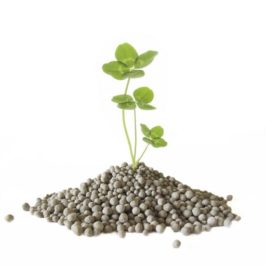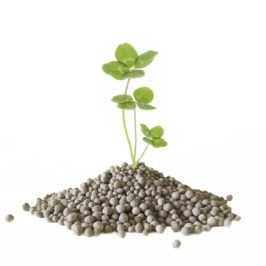There is no question about the necessity of having sufficient Phosphate available for strong and healthy farm pasture growth. There are however, many conflicting opinions around the best type to apply. I’ll present the basic facts, along with my opinions, around the most common options available to farmers. My aim is to give you a basic knowledge from which you can ask questions and decide on the most suitable option for your farm.
The first thing to understand is that pure Phosphorus, (100% P), is not found outside a laboratory. If you did chemistry at school, you may remember that pure Phosphorus was kept in a jar of water. When the teacher took a piece of it out of the water it almost immediately burst into flames. Obviously this would not be a convenient form to use as a fertiliser.
In nature, the majority of Phosphorus is found chemically bonded to Calcium in various forms of Calcium phosphate. All animals that have a skeletal structure, combine Phosphorus and Calcium to create bones. It is deposits of fish skeletons or other animal bones that have been compressed over centuries into rocks that we now mine around the world to manufacture a variety of Phosphorus fertilisers. The Phosphorus content of these mined deposits varies from a maximum of around 18% in some Russian deposits, down to around 7% in some of the other international deposits.
Other than the Phosphorus and Calcium portion of the rock deposits being mined, some may contain significant quantities of beneficial trace elements such as Copper, Manganese and Zinc. However some deposits contain significant levels of Cadmium, a heavy metal that has a naturally strong attraction to Calcium phosphate. Around the world Cadmium contamination of farming soils has become a matter of serious concern. As a result of a scientific study of Waikato soils about 10 years ago, the New Zealand fertiliser industry has adopted a voluntary maximum Phosphorus/Cadmium contamination level of 280 ppm (parts per million). Cadmium bonds to soil particles and is readily taken up by plants and enters the human food chain. Cadmium levels build in our bodies and result in, well documented, serious health risks. Some sedimentary Phosphate rock deposits have Cadmium levels of up-to 640 ppm while some Guano deposits have levels typically less than 50 ppm.
After the Calcium phosphate has been mined, it finds its way into our farm soils by two distinctly different processes. The first is where the mined rock is chemically processed to produce water soluble Phosphorus fertiliser products such as Super phosphate and DAP. The other process involves the mechanical crushing, screening and/or grinding with the end product being directly applied to soil as RPR or Guano.
To be continued…
Andrew de Lautour. PFP Fertilisers Ltd. ©
For further information or a sample pack phone us on (06) 858 5235


